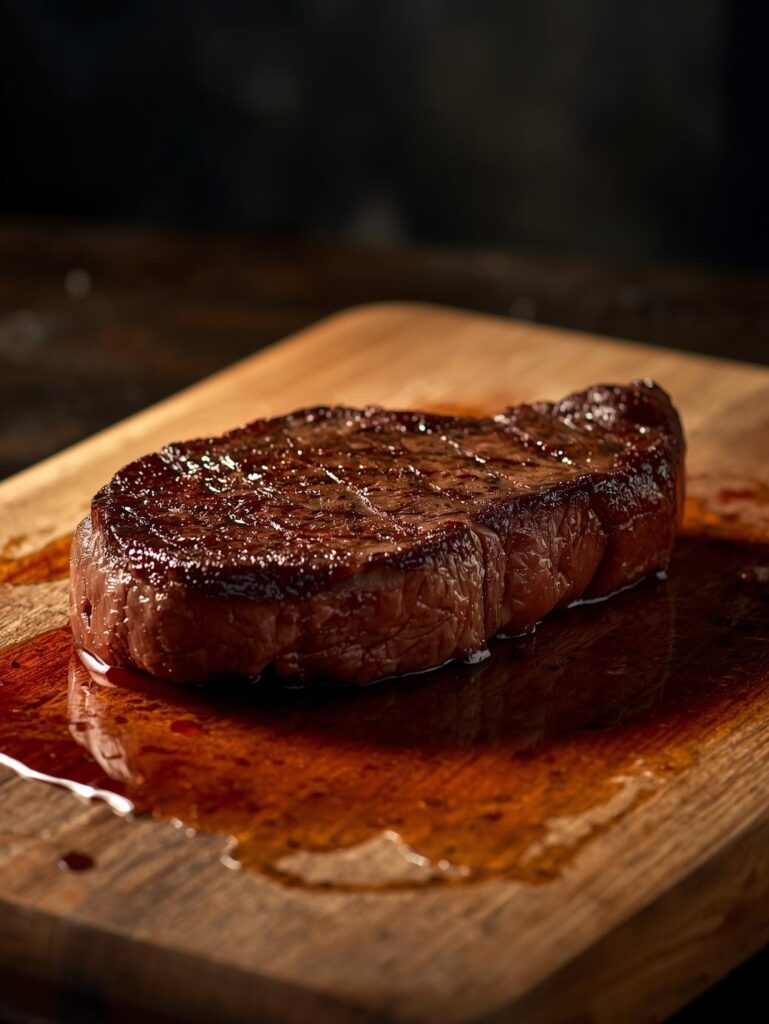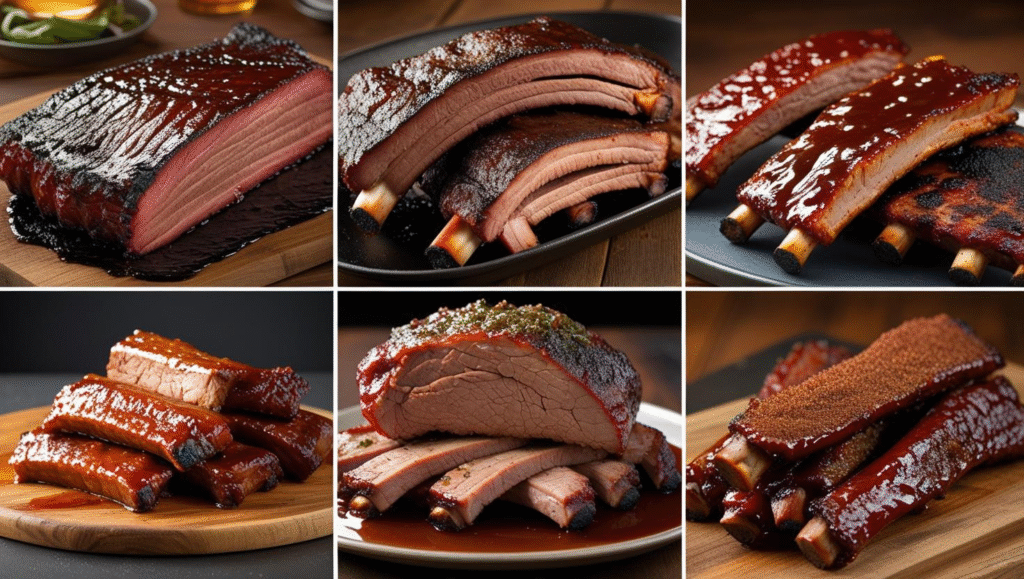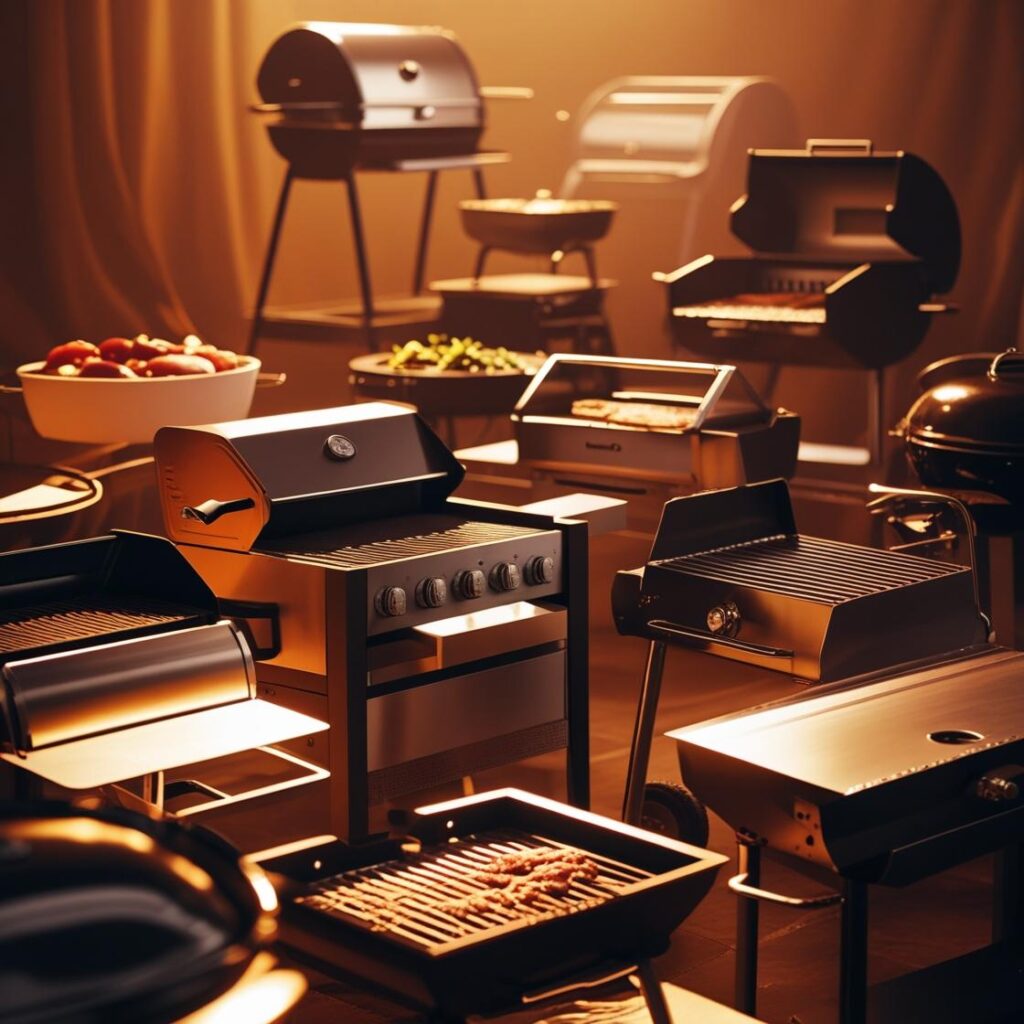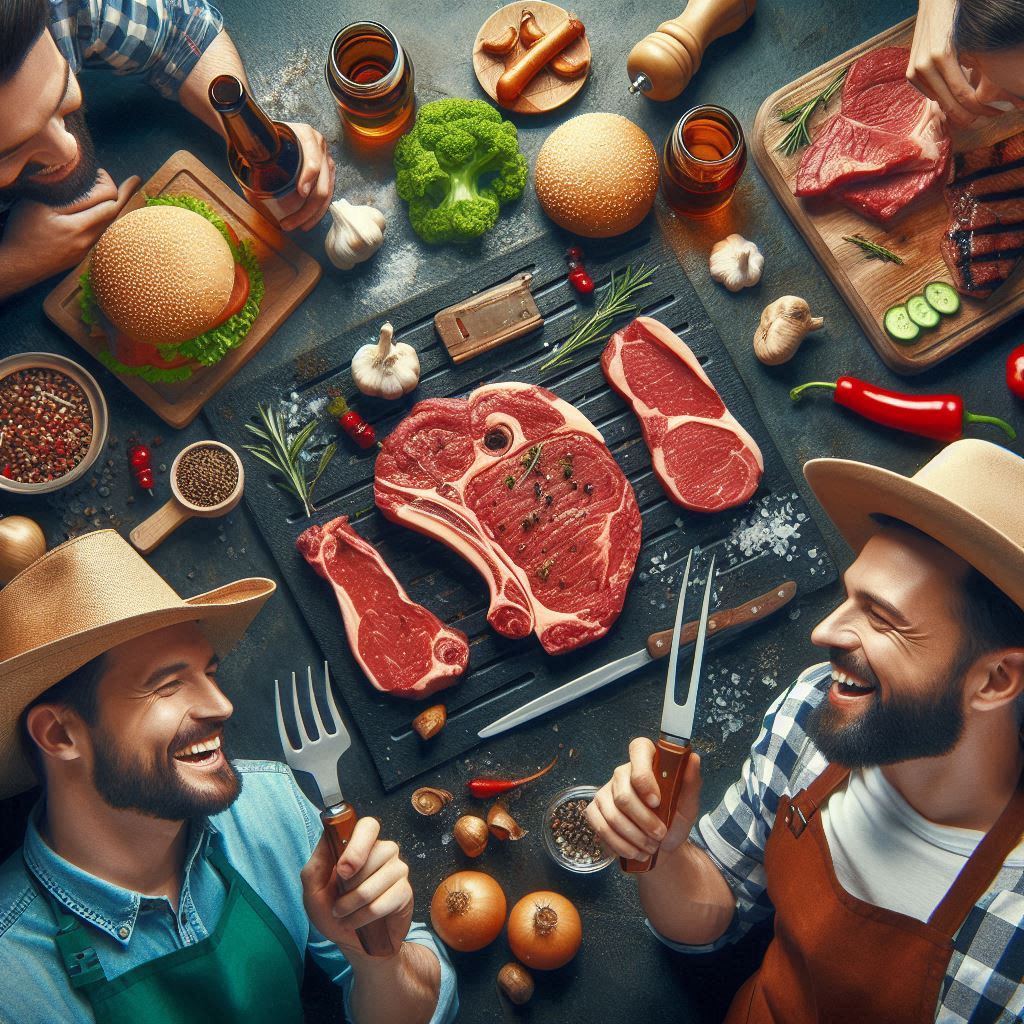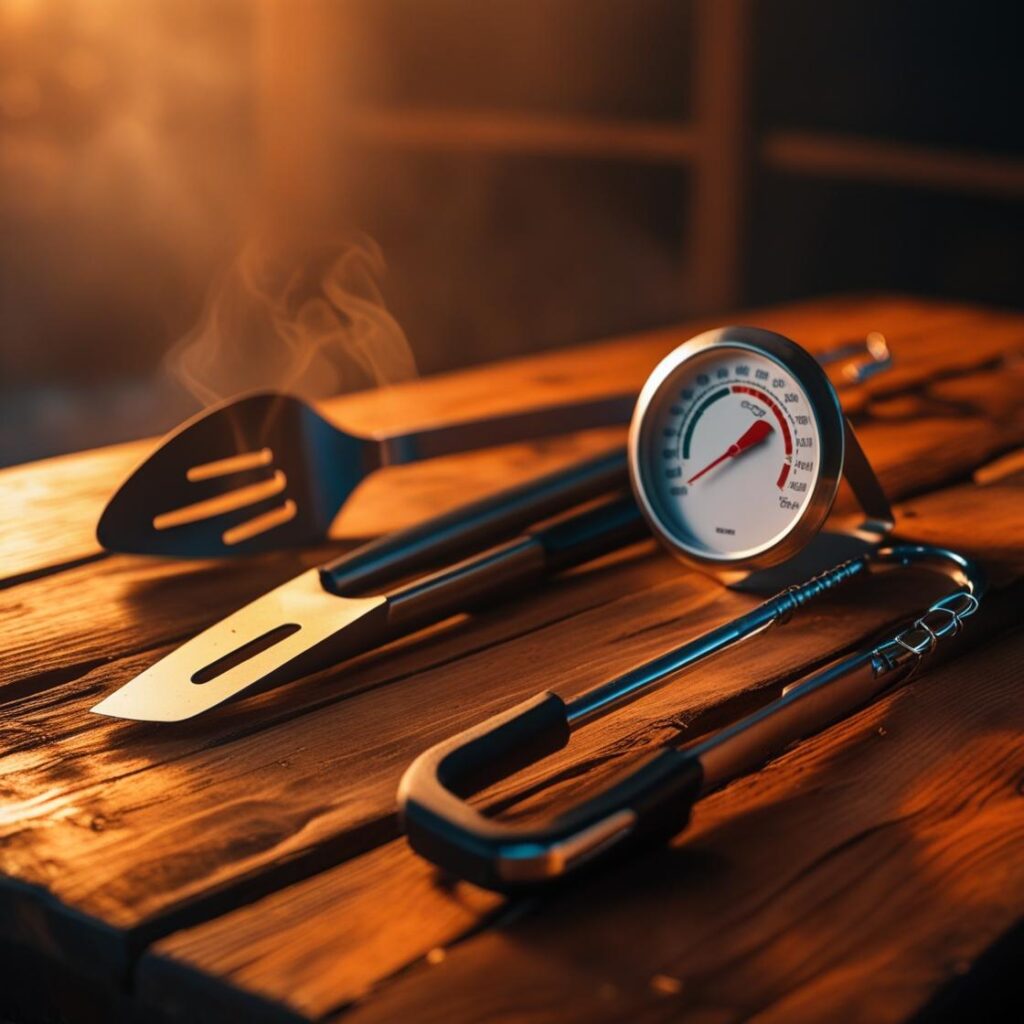The Biggest Pan-Searing Error That Makes Steak Chewy
You’ve done everything right. You bought a high-quality cut, you seasoned it perfectly, and you got a beautiful sear on a screaming-hot cast-iron skillet. You slice into your steak, eager for that tender, juicy bite, only to be met with disappointment.
The meat is tough, and every mouthful is a struggle. If you’ve ever wondered, “why is my steak chewy?,” despite your best efforts, you’re not alone. This is one of the most common and frustrating cooking problems, and it’s usually caused by a single, critical error.
This guide will reveal the biggest pan-searing error that makes steak chewy and provide a simple, foolproof solution to ensure your steak is perfectly tender every single time.
The Problem: The Biggest Pan-Searing Error That Makes Steak Chewy
The number one reason your steak is tough after pan searing is not what you think. It has nothing to do with the sear itself, but with what you do immediately after the sear. The biggest mistake is slicing or serving the steak before it has had adequate time to rest.
It sounds simple, but this one misstep can completely ruin your steak. The intense heat from the searing process causes the muscle fibers in the steak to tense up and contract. This pushes the juices to the center of the steak. If you cut into the steak at this point, all those precious juices—the key to a tender, juicy bite—will rush out onto your cutting board, leaving you with a dry, rubbery, and incredibly chewy steak.
The Science of a Chewy Steak: What Actually Happens
To understand why resting is so important, we have to look at what’s happening to the meat on a molecular level.
- Muscle Fibers & Juices: A raw steak is made up of long muscle fibers held together by connective tissue. Water molecules and rendered fat are trapped within these fibers. When you cook a steak, the heat causes these fibers to shrink and contract, squeezing the juices and pushing them towards the center, where the temperature is lower.
- The Effect of Resting: When you remove the steak from the heat, the temperature of the entire steak equalizes, and the muscle fibers begin to relax. This relaxation allows the juices that were forced to the center to redistribute throughout the meat. This is the only way to achieve a tender steak.
- The Chewy Result: If you cut into the steak before this process is complete, the juices pour out, and the shrunken, contracted fibers are left without the moisture that gives the steak its tender texture. This is what makes your steak is tough and dry.
This is why a steak can look perfectly cooked, even a beautiful medium-rare, and still be impossibly tough. The doneness is correct, but the internal structure of the meat has not had time to re-settle.
The Solution: Mastering the Final Stages of Cooking
The fix for a chewy steak is incredibly simple: patience. Here is the definitive guide on how to rest your steak to achieve a tender, juicy result every time.
The Golden Rule of Resting
You should rest your steak for at least 5-10 minutes. For larger, thicker cuts, you may want to rest it for up to 15 minutes. A good rule of thumb is to rest your steak for roughly half the amount of time it spent on the heat.
Step-by-Step Guide to Resting
- Remove from Heat: Once your steak reaches the desired doneness (use a reliable meat thermometer to check), remove it from the pan. You can find high-quality thermometers at retailers
- Place on a Resting Surface: Do not place the steak directly on a cold plate, which can cause the outside to cool too quickly. Place it on a wooden cutting board or a wire rack set over a plate. This allows air to circulate and prevents the bottom of the steak from getting soggy.
- Cover Loosely: Tent the steak with a piece of aluminum foil. Do not wrap it tightly, as this will trap steam and soften the beautiful sear you just created.
- Wait: Wait the allotted time. The internal temperature of the steak will actually continue to rise for a few degrees during this period—a phenomenon known as carryover cooking.
- Slice and Serve: After resting, slice your steak against the grain to ensure a tender bite.
- Suggested Image Alt Text: A perfectly cooked steak resting on a cutting board, covered loosely with foil, a key step to prevent chewy steak.
Common Mistakes That Make Your Steak Tough
While not resting is the biggest culprit, there are other steak searing tips you should follow to avoid a tough steak.
Using the Wrong Cut of Meat
Some cuts of steak are naturally tougher than others. While a great sear can improve any steak, a cut from the loin or rib (like a filet mignon or ribeye) is naturally more tender than a steak from the leg or shoulder.
Overcooking the Steak
Cooking your steak beyond your desired doneness will cause the muscle fibers to contract too much, squeezing out all the moisture and leaving you with a tough and dry meat. Always use a thermometer to hit your target temperature. You can learn more about how to get the right doneness in our guide on How to Get a Restaurant-Quality Crust on a Steak at Home.
Slicing with the Grain
Slicing against the grain is crucial for a tender bite. When you cut against the grain, you shorten the muscle fibers, making them much easier to chew. If you slice with the grain, the fibers remain long, and your mouth has to do all the work, resulting in a steak tough after pan searing.
Not Using the Reverse Sear Method
For a thick steak (over 1.5 inches), a simple pan sear may not be enough to cook the steak all the way through without burning the outside. The reverse searing method involves gently cooking the steak in a low-temperature oven before a final sear, ensuring it is cooked evenly from edge to edge.
Troubleshooting Table: How to Fix a Chewy Steak
| Problem | Symptoms | How to Avoid It | How to Fix It (if it’s already too late) |
| Steak is Chewy | Tough to chew, rubbery texture. | Let your steak rest for at least 5-10 minutes. | Slice thinly and use in a dish that has a sauce or liquid to rehydrate it. |
| Steak is Dry | Lacks juices, feels spongy. | Don’t overcook! Use a meat thermometer to pull at the right doneness. | Slice thinly and use as a topping for a salad with dressing or a sandwich with sauce. |
| Tough Outside | The outside is hard, not crispy. | Pat the steak completely dry before searing. | Unfortunately, this is a permanent issue. Focus on better prep next time. |
| Bland Taste | Lacks flavor, not seasoned properly. | Season liberally with kosher salt and pepper. | Add a flavorful sauce or seasoning after cooking. |
FAQ: Fixing Tough, Chewy, or Dry Pan-Seared Steak
Q: Why is my pan-seared steak tough?
A: Toughness usually comes from high heat with no rest, overcooking, or searing a cold, wet, or lean cut. If the muscle fibers tighten too quickly, the steak ends up firm instead of tender.
Q: How can I prevent chewy steak?
A: Let the steak come closer to room temp, pat it dry, season just before cooking, and avoid flipping too often. Also—don’t cook past your target temp and give it time to rest.
Q: Why is my steak tough and dry?
A: Either it was overcooked, not rested, or there wasn’t enough marbling or fat. Dryness also happens when the surface moisture steams the steak instead of allowing a sear.
Q: What pan-searing mistake makes steak chewy?
A: Starting with a wet steak or crowding the pan prevents browning. That forces the meat to steam and tighten up, resulting in a rubbery texture.
Q: How do I get a tender steak after searing?
A: Let it rest for at least 5 minutes so the juices redistribute. You can also finish thicker cuts in the oven or use reverse sear to avoid overcooking the interior.
Q: Why is my steak tough after resting?
A: Resting can’t fix an already-overcooked steak. If the internal temperature overshoots before resting, the meat will stay firm and dry.
Q: What can I do with a chewy steak?
A: Slice it thinly against the grain, repurpose it into tacos, stir-fries, or sandwiches, or add a finishing sauce or butter to improve moisture and texture.
Q: Why does my steak feel like rubber?
A: It likely didn’t render the fat properly or was cooked too quickly at the wrong temp. Undercooked fat combined with overcooked muscle can create a rubbery bite.
Q: What are the most common steak searing mistakes?
A: Using low heat, flipping constantly, starting with a wet steak, pressing it down, skipping rest time, using the wrong oil, or cooking too long.
Q: Why is my medium-rare steak still tough?
A: Medium-rare doesn’t guarantee tenderness. The cut, grain direction, lack of resting, or moisture issues can still make the texture chewy or dry even if it’s pink inside.
Conclusion: Don’t Let Your Hard Work Go to Waste
The biggest pan-searing error that makes steak chewy is not a lack of skill but a lack of patience. That precious resting period is where a good steak becomes a great one. It’s the difference between a tough, rubbery piece of meat and a perfectly tender, juicy masterpiece. By mastering the rest, you’ve unlocked the single most important secret to cooking steak at home. Say goodbye to chewy steak and hello to tender, succulent perfection, one slice at a time.

